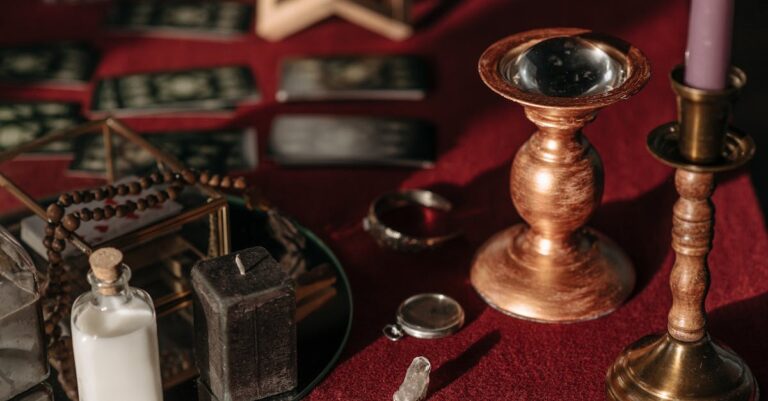
## The Cartographer’s Tide
The salt spray stung Elias’s cheeks as he squinted at the half-finished hull. Oak, seasoned by years of monsoon winds, smelled like damp earth and ambition. He ran a calloused hand along the curve of the keel, tracing its nascent strength. Sixteen years old, but already people called him a builder, not a boy. His father, a master shipwright for the Society of Jesus, had taught him everything—the language of timber, the dance between mast and sail. Now, his father’s grip loosened; Elias felt the weight of responsibility settle on his shoulders like a lead keel.
The Jesuit shipyard in Goa buzzed with frantic activity. Not the steady hum of production, but a sharp, anxious thrum. The Portuguese empire felt brittle, like aged parchment threatening to crumble at the slightest touch.
“The French are getting bolder,” Father Mateo, his father’s close friend and the shipbuilder’s liaison with the Jesuit order, said, wiping sweat from his brow. He didn’t look at Elias—his gaze fixed on the chaos of laborers hauling timbers. “They raided the northern stores last night.”
Elias felt a knot tighten in his gut. Timber was currency, power. Losing stores crippled more than just projects—it undermined faith.
“How much?” Elias asked, his voice low.
“Enough to cripple three caravels,” Mateo muttered, then abruptly turned toward Elias. “You’ll oversee the allocation of salvaged stock for *São Sebastião*. No mistakes.”
*São Sebastião*, the flagship, Elias’s masterpiece. A grand three-masted carrack destined to sail for Macau and beyond. Its design incorporated Centaur logs—specially treated timbers which, when slotted together, created waterproof compartments for communication along the treacherous monsoon passages. A system Elias himself devised, a whisper across miles of churning ocean.
The French weren’t just stealing timber; they were stealing opportunity. Elias saw it clearly. He felt the shift in Goa, a tremor beneath the veneer of imperial control. The Society’s influence waned with each intercepted shipment, each lost trade route.
Days bled into weeks, the shipyard a whirlwind of activity and quiet desperation. Elias poured over blueprints, wrestling with calculations for sail geometry, the precise angle of a davit. He ate little, slept less. His world shrank to the dimensions of *São Sebastião*.
One humid afternoon, a young cartographer named Inácio approached him. Skin tanned the color of old leather, eyes sharp and perpetually scanning, he was a whirlwind of charts and calculations.
“The new star charts arrived from Malacca, Elias,” Inácio said, his voice hurried. “Portuguese trade routes are shifting. They’ve found a shorter path through the Sunda Straits.”
Elias frowned, tracing a finger on the partially completed hull. “And?”
“The French are watching closely,” Inácio clarified, handing Elias a rolled parchment. “They’ll be mimicking the route soon enough.”
Elias unfurled the chart, a web of lines and notations marking waterways, coastlines, constellations. He recognized the meticulous hand of João Teixeira, one of Portugal’s most esteemed cartographers.
“João’s work is impeccable,” Elias admitted, studying a particularly detailed rendering of the Malacca coast. “But it doesn’t address the Andaman Sea.”
“No,” Inácio agreed, a faint crease appearing between his eyebrows. “The Portuguese avoid it. Unstable waters, seismic activity.”
“There’s a prophecy,” a voice cut in from behind.
It was Brother Thomas, a Franciscan monk who assisted at the orphanage adjacent to the Jesuit compound. His face was pale, etched with premature lines from years spent tending to the sick and orphaned.
Elias turned slowly. “A prophecy?”
“From ancient Sinhala texts,” Thomas continued, his voice almost a murmur. “A translator—a Sinhalese boy we’re tutoring—discovered it recently. It speaks of an eclipse, a specific alignment of celestial bodies, that reveals a passage through the Andaman Sea, avoiding the worst of the tectonic thrust.”
The orphanage had become an unexpected wellspring of knowledge. Plagued by outbreaks—smallpox, dysentery—the Franciscan priests experimented with isolation methods, inadvertently stumbling upon rudimentary understandings of disease transmission. Brother Thomas had noticed patterns, connections. He looked at the world through a scientist’s eye, hidden behind a priest’s cloak.
“And you believe this?” Elias asked, skeptical but intrigued.
“The boy has translated it repeatedly,” Thomas insisted, his gaze unwavering. “He aligns the eclipse predictions with existing Sinhala astronomical records. It’s remarkably precise.”
The idea was audacious, improbable. But desperation fueled audacity in times like these. Elias felt a flicker of something beyond doubt—a current of possibility, cold and exhilarating.
“Show me,” he said simply.
He spent the next few days immersed in ancient Sinhala script, deciphering cryptic verses alongside the young translator. He felt a kinship with these boys—cartographers and monks, all grappling with unknown forces, charting courses through chaos.
The French were ramping up their activities. Rumors circulated about a raid on the Portuguese silver mines in Padrão. A pall of fear hung over Goa, thicker than the monsoon humidity. Elias saw it in Mateo’s weary face, in the hurried steps of the laborers.
“They’ll be coming for your logs soon,” Mateo warned him, his voice low. “Word travels fast.”
Elias nodded, already anticipating it. He had a plan—a risky gamble that hinged on the Sinhala prophecy and his understanding of naval architecture.
One evening, he found himself standing before a small, cloaked figure in the orphanage courtyard—the young translator.
“Tell me again,” Elias said, gesturing to a series of complex calculations scrawled on a slate. “About the eclipse.”
The boy recited the prophecy, his voice strong and clear despite his youth. Elias compared it to Inácio’s charts, overlaying calculations for tidal shifts and celestial positions. He saw a pattern emerging—a delicate dance of stars, tides, and tectonic forces.
“It’s more than just avoiding the thrust,” Elias realized, his mind racing. “It’s about harnessing it.”
He envisioned a subtle alteration to *São Sebastião*’s keel—a carefully calibrated adjustment that would allow the ship to ride the tremors, to use the Andaman Sea’s instability as an advantage.
“Can you draw this?” Elias asked Inácio, pointing to a blank slate. “A detailed map of the projected passage, incorporating your calculations.”
Days turned into a blur. Elias oversaw modifications to *São Sebastião*’s hull, his hands moving with a precision born of obsession. He worked alongside local artisans—carpenters, blacksmiths, rope makers—weaving a tapestry of skill and determination.
Meanwhile, an eccentric spice merchant named Lorenzo had commissioned a series of paintings from a reclusive artist. He’s obsessed with tracing cyclical coastal migrations, believing they reflected ancient trade routes and the fates of lost merchant vessels.
“The patterns…they repeat,” Lorenzo had muttered to the painter, gesturing to a canvas depicting shifting sand dunes and crumbling cliffs. “Like tides…like souls.”
Lorenzo’s art, dismissed by most as the ramblings of a madman, now seemed to resonate with Elias. The cyclical nature of history, the ebb and flow of empires—it was all interconnected.
The day of the eclipse arrived, a sweltering afternoon thick with anticipation and dread. Elias stood on the deck of *São Sebastião*, watching as the sun’s disc slowly disappeared behind the moon. The sky darkened, an eerie twilight descending upon Goa. He felt a tremor run through the ship—a subtle vibration that seemed to sync with the celestial alignment.
Suddenly, a messenger arrived from Mateo, his face grim. “The French are coming,” he declared. “They raided our timber stores again.”
Elias didn’t flinch. “Prepare to set sail,” he ordered, his voice calm and resolute.
As *São Sebastião* slipped its moorings and headed toward the open sea, Elias felt a surge of adrenaline. He had gambled everything—his reputation, his future—on the whispers of prophecy, the calculations of cartographers, and the instincts of a builder.
The ship sliced through the waves, heading towards the Andaman Sea—toward the heart of uncertainty. He trusted his calculations, he followed the stars, and in the face of encroaching darkness, Elias felt a profound sense of hope.
The tide was turning.


